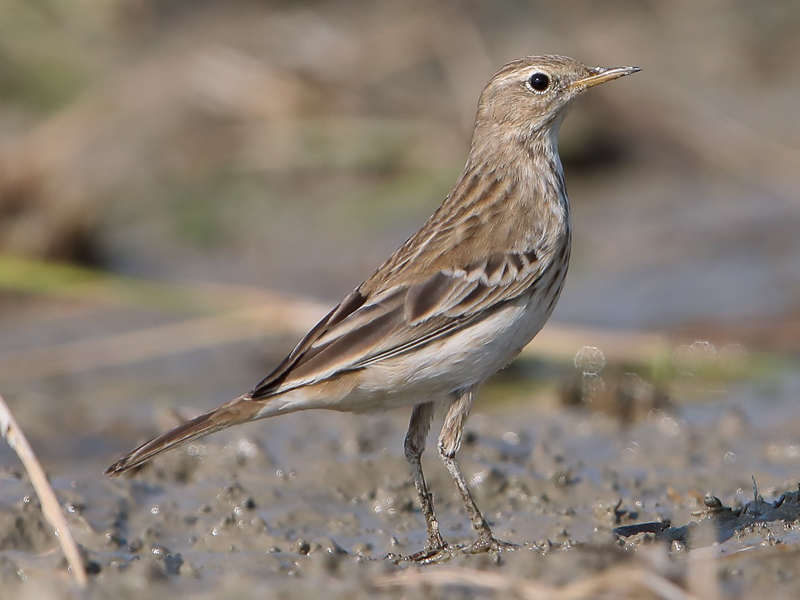Water Pipit Anthus spinoletta 水鷚
Category I. Accidental.
IDENTIFICATION

Nov. 2019, Michelle and Peter Wong.
15-17 cm. In all plumages separated from Buff-bellied Pipit by slightly larger body and, longer stronger bill, browner upperparts with brown rump contrasting slightly with mantle, more distinct streaking above and less prominent moustachial stripe. In winter plumage Water Pipit is paler and whiter below with browner and more diffuse streaks, and usually darker legs.
In breeding plumage it has pale peachy underparts (whiter on the belly) and little streaking. It differs from Buff-bellied Pipit in its less distinct moustachial and malar stripes and malar patch, more distinctly streaked crown and mantle, the latter also browner, and less streaked breast and flanks (Alström et al. 2003).
VOCALISATIONS
The call is not as thin or high-pitched as Buff-bellied Pipit, but is similar to that of Rosy Pipit. Like other small pipits, can give several shorter or less distinct calls.
DISTRIBUTION & HABITAT PREFERENCE
All records have occurred at low-lying wetland areas of fish ponds, freshwater marsh and wet agriculture.
OCCURRENCE
Records have occurred from 9 November to 15 December.
2000: one at San Tin during 7-15 December.
2014: one at Sha Po on 20 November.
2015: one at Lok Ma Chau on 27 November.
2016: one at San Tin on 6 December.
2017: one at Long Valley during 9-12 November.
BEHAVIOUR, FORAGING & DIET
Very similar to Buff-bellied Pipit.
RANGE & SYSTEMATICS
Breeds in mountainous areas of central and southeast Europe and Iran, and in Central Asia, Transbaikalia, Mongolia and northwest and north China; winters from continental west and southwest Europe east through the Mediterranean and Black Sea areas south of the Caspian to the Middle East and southwest Asia; also, in south China (Tyler 2020). In China a summer visitor to the northwest and north central areas and a winter visitor to the east, at least as far north as Beijing, and areas south of the Chang Jiang (Yangtze River) (Liu and Chen 2020).
Three subspecies are recognised, of which blakistoni winters in the Indian subcontinent and south China, including HK. The remaining subspecies winter in Europe and northwest Africa (spinoletta) and in northeast Africa and southwest Asia (coutellii).
CONSERVATION STATUS
IUCN: Least Concern. Population trend stable.
Alström, P., K. Mild and B. Zetterström (2003). Pipits and Wagtails of Europe, Asia and North America. Christopher Helm, London.
Liu, Y. and Y. H. Chen (eds) (2020). The CNG Field Guide to the Birds of China (in Chinese). Hunan Science and Technology Publication House, Changsha.
Tyler, S. (2020). Water Pipit (Anthus spinoletta), version 1.0. In Birds of the World (J. del Hoyo, A. Elliott, J. Sargatal, D. A. Christie, and E. de Juana, Editors). Cornell Lab of Ornithology, Ithaca, NY, USA. https://doi.org/10.2173/bow.watpip1.01

